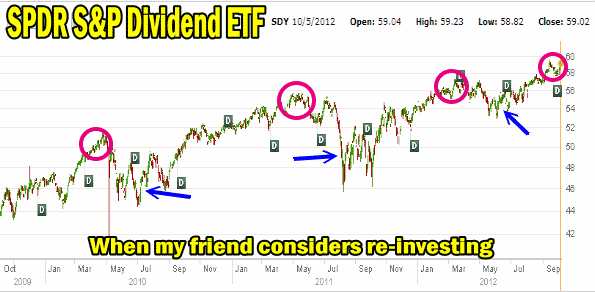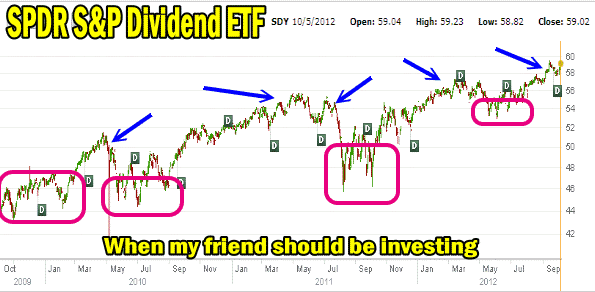 Paper trading is definitely under-rated. Many investors believe the only way to learn to be a better investor is through risking actual capital. These investors will advise other investors that “when you lose real capital, then you learn.” This is poor advice and shows a lack of understanding for the importance and value of paper trading.
Paper trading is definitely under-rated. Many investors believe the only way to learn to be a better investor is through risking actual capital. These investors will advise other investors that “when you lose real capital, then you learn.” This is poor advice and shows a lack of understanding for the importance and value of paper trading.
I am always paper trading strategies. Sometimes I am paper trading for months to a couple of years to determine the suitability and level of consistent profit of a strategy. I look for at least a 95% or higher consistent winning trades before I consider a strategy as successful. A strategy that loses more than 5% of the time means losses can mount which is not want I want for my hard earned capital.
The Trouble With New Investing Strategies
No matter how good an investor is, new strategies bring new risk. Every new investing strategy requires knowledge and experience. When investors risk actual capital in a new strategy they are not just placing capital into a potentially losing situation, but they are also removing capital from their portfolios that could be generating income through strategies that have previously been tested and implemented and are now generating income. Deciding not to paper trade a new strategy means damage to a portfolio that is two-fold – a direct loss of capital and a loss of use of capital.
Paper Trading A New Strategy
This article on paper trading came about because of the Trading For Pennies Strategy on the members section of my website. The Trading For Pennies Strategy is a new strategy that I am studying. Paper trading allows me to check out a new strategy, learn the ins and outs, make changes to the strategy, see how those changes perform and determine the number of winning versus losing trades. I am then able to decide whether to implement the new strategy or not. Through paper trading, I gain the knowledge and expertise necessary to implement the new strategy or to decide against its use. With paper trading, I can do all of this comfortably without ever losing capital and continue to enjoy profit and income from my portfolio which sits unhampered by a new strategy.
Returning To Paper Trading
There are always instances where a strategy that has been implemented in my portfolio and was once working properly, no longer functions and I begin to see losses. This is a time to stop the strategy, end any further losses and return that strategy to paper trading to study it further to determine what has changed and how to either adjust the strategy to return it to profitability or retire the strategy from use. By returning a failing strategy to a paper trading state I often am able to figure out what has gone wrong and bring that strategy back to its original level of profitability.
Paper Trading Advantages
The two biggest advantages to paper trading is the knowledge that losses are on paper only and that a new strategy is being perfected that will generate income and continue to grow a portfolio.
But there are other advantages to paper trading. Paper trading allows for experimentation without worry about capital losses and experimentation is the only way for the new strategy to be fine tuned to provide consistent winning trades. Through experimentation an investor can study “what if” scenarios and often will find aspects of the new strategy that they did not know could create additional profit potentials.
Paper trading slows down the pace of trading and allows the investor to focus on the structure of the strategy without worrying about losses. Through paper trading an investor can intentionally take losses to study how to reduce losses and how to implement rescue strategies that will work. For example my “in the money puts” rescue strategy of rolling and reducing the number of put contracts with each roll, is a rescue strategy I perfected through over two years of paper trading to determine its suitability. Imagine if I had simply implemented that rescue strategy with actual capital only to discover in a bear market that it did not work. The losses would have been enormous and would have resulted in significant damage to my portfolio.
Using Paper Trading To Understand Opportunities
Paper trading allows for practice to become a better investor who can learn to take advantage of opportunities through periods of weakness or crisis. For example an investor friend who I have known for years invests heavily in ETFs. He does this because his belief is that you can never be hurt in ETFs. He always tells me his ETFs will “never disappear”. But this same friend was always selling his ETFs in a sell-off and then once the ETF had recovered he would phone me to ask if I thought it was finally a “good time to re-invest”.
My response each time was to tell him he should be paper trading to become an investor that does not lose his money. I asked him what was the point in being in an ETF that he believed was safe, only to keep losing capital by selling out each time he was worried about the stock market. Instead I advised him to review a chart on his ETFs and look at where he was buying and selling his shares.
I have included below a chart from his trades in SDY, the SPDR S&P Dividend ETF. The Red Circles are periods when he had bought shares and the blue are periods where he had sold them for losses. Because he collected the dividends in between buying and selling he felt like he was investing. While readers may laugh, his style of investing is common. Investors buy when they think everything is “okay”. For example recent statistics show that investors are slowly starting to put capital back into ETFs and Mutual Funds yet the market has not been this high in 4 years.

The red circles show when my friend always re-invests his capital. The blue arrows are when he sells his shares.
Next I told him to look at the same chart and mark the periods when I had told him he might want to consider buying the SDY for his portfolio and where to consider selling. The red rectangles are where I suggested buying shares and the blue arrows where to consider possibly selling some or all of his shares. It is exactly opposite of what he was doing.

Paper Trading provides the proof a lot of investors need in order to make the right investing decisions.
Paper Trading Can Provide The Evidence Many Investors Need
Once I kept showing these two charts to my friend he began to get the picture and just to “prove it to himself” he opened a paper trading account with his broker. After paper trading all of 2011, he put his strategy into actual use.
This past summer he bought 19,800 shares of SDY between $53.50 and $54.25. In the past because he had over a million dollars invested, he felt he could afford to take a lost of $1.00 to $4.00 on his trades. He was working and could continue to put more money into his portfolio each month and was earning on average .40 cents a quarter in dividends. Therefore if he lost $2.50, he felt the loss was less because he was earning the dividend and was still putting money into his investments. But his portfolio growth over a 10 years period was actually declining in real terms since the losses were being recovered by his applying more capital to his portfolio.
On Friday Oct 5 2012, he sold 50% of his SDY shares after picking up 2 dividend payments totaling 91 cents. He sold 10,.000 shares at $58.95 on Friday for a gain of $5.00 on each share. For the very first time in 10 years he had experienced a true profit. He earned $50,910.00 (gain and dividends) on his investment of $1,066,824.00. This was a return of 4.7% in just two months. Needless to say my friend on Friday was ecstatic and is continuing paper trading more strategies on ETFs.
While again, many investors may laugh at his record, he is far from being alone. Statistics show that my friend is overwhelming among the majority of investors who buy and sell at inopportune times. Paper trading then, can provide the proof or evidence a lot of investors need. Paper trading allows them to take control of their portfolios and become profitable investors.
Every Strategy Is Not For Everyone
Paper trading allows an investor to discover whether he is able to successfully implement a specific strategy. It is critical for investors to realize that not every strategy will work for them. If all investors could do every single strategy perfectly and profit from them, then the investing world would be completely different and far less volatile. Therefore paper trading allows an investor to work at learning a new strategy to determine how consistently profitable it is or whether to discard the strategy and move on to learning other ones.
For example I cannot consistently do winning SPY call trades, but as I am beginning to find, I can do IWM ETF calls profitably using the Trading For Pennies strategy. So why could I be good at one strategy and not another? Because when I use a strategy I want consistently winning trades. I do not want 3 to 5 winning trades and then 2 to 3 losses. There is no point in spending time trading to constantly fight losses.
I have visited many day and swing trading websites that once you pay a subscriber fee, will show their trades day by day. Some months end in complete losses. No matter how small the losses are, why spend an entire month and end up losing capital.
When capital is lost investors lose out on the most important aspect of investing – compounding of capital. This goes back to my old complaint about financial planners and young people. Financial planners are primarily template driven. What I mean by this is that they follow a formula set out by the overseeing organization itself. Banks and insurance companies are prime examples. When a young person invests their capital with these types of financial planners, their savings are almost always placed into higher risk products because the belief is, they are young and can afford to take the risk. Other financial planners take young people’s capital and place higher percentages into stocks and less into bonds and fixed income products. Again it is because they believe young people have years ahead of them to “recover” from any losses.
This is absolutely the worst piece of strategic investment advice ever given and it happens every day. The exact opposite is true. Young people should NEVER risk their capital. The compounding effect of money is felt more keenly the longer it compounds. If young people continue to lose capital when young, they are robbing themselves of the prime compounding years.
Paper trading can show any investor young or old how to take an investment strategy, whether simple or complex, learn it and profit from it.
Paper trading provides feedback that can be used to improve a strategy and increase winning results.
Disadvantages Of Paper Trading
Like anything in life, nothing is perfect. Paper trading cannot prepare investors for the emotions tied to a losing trade. Losing capital in a paper situation versus losing real capital is a completely different emotional response. Paper trading can help investors prepare for possible losses but nothing can prepare investors for the time when an investment fails and there are losses.
People love winning trades and talk about them to their friends and family, but investors rarely talk about losing trades. The emotional impact of losses stay with investors much longer than winning trades. A good example is the market crash of 2008 to 2009 which has scarred so many investors that they refuse to risk their remaining capital in the stock market. I saw the same effect in 1974 when I started trading and the market collapsed 50%. Many of my friends refused to go back in until the mid 1980’s which was two years away from the crash of 1987. They re-entered at the wrong time.
The other important aspect which paper trading cannot easily replicate, is the use of margin to effectively leverage a portfolio. Today though with many online paper trading accounts available, some are tackling the issue of margin to make the trading as real as possible.
Paper Trading Websites
I have been paper trading for years on actual paper so my interest in online paper trading does not exist. However there are a number of excellent websites for online paper trading that seem like real-time trading. Your discount broker may even provide a paper trading account. To find other websites you can consider Googling the term “Free Paper Trading Account” which will bring up hundreds of possibilities. Check the site to see if it is truly free and if the quotes are real-time or delayed. Depending on what you are trying to accomplish with Paper Trading, real-time quotes are of course better, but these may not be free for most accounts except perhaps from your discount broker.
Paper Trading Importance Summary
I believe strongly that investors need to understand the importance of paper trading and how it will have a positive impact on their portfolios as well as assist in making them better, and more confident investors. Paper trading is not about a one time use. It is a method of learning new strategies and re-examining strategies that are in use but have stopped performing. Paper trading should be a priority for every investor. It should become second nature to paper trade a new strategy or an old one to consistently earn profits and protect capital while learning and tweaking a strategy before risking real capital.
